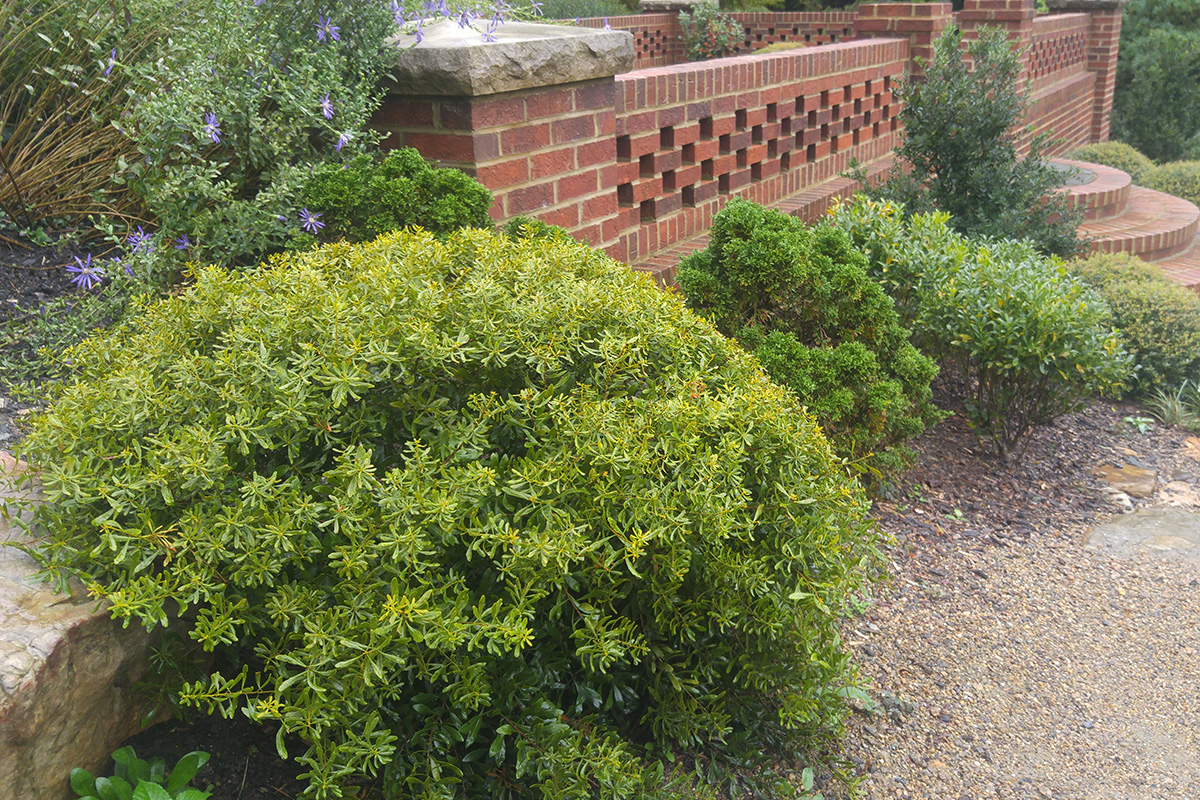
In the Southeast, we can sometimes have wet years. The long springs of those years lure me into planting “just one more plant!” while I ignore the specter of summer droughts past. But those rains also reveal more than one low spot in my landscape that stay mucky for a few days after a good soaker. In fact, I recently watched in heartbreak as a paperbush (Edgeworthia chrysantha, Zones 7–9) succumbed to root rot in one such area. This got me thinking that you can always add water, but you can’t take it away. It makes sense to choose plants with the wet years in mind when you’re faced with areas that don’t drain so well. Here are five of my favorite shrubs that can take it wet for a while and hang tough when it’s not. As a bonus, these species are all native to the Southeast.

Swamp azalea
Rhododendron viscosum, Zones 4–9
If you’ve got a wet area in partial shade, add swamp azalea to your wish list. Like many other native azaleas, it has clusters of flaring, fragrant flowers that attract butterflies. But the white or pink-tinged flowers of swamp azalea appear after the leaves, between June and July (depending on where you are in the Southeast), and their fragrance is spicier than that of their high-spring cousins. If you brush a flower when you move in close for a sniff, you may end up with a sticky residue or a flower itself stuck to your nose. Look closely, and you will see sticky glands covering the flower tubes and understand why this species is sometimes called clammy azalea. Swamp azalea is low growing at just 3 to 5 feet tall, and it displays some fall color of gold, orange, and burgundy tones.

‘Burgundy Spice’ sweetshrub
Calycanthus floridus var. purpureus ‘Burgundy Spice’, Zones 4–9
A new addition to the sweetshrub gang of selections and hybrids, ‘Burgundy Spice’ is a real looker. Sweetshrub is best known for the unique, fruity fragrance of its spring flowers—a favorite natural perfume of Southern ladies of eras past. The burgundy-colored leaves of this selection cover the slowly suckering shrub, making its flowers a distant memory and bringing contrast in spades to spots that are sunny to partial shade. While it can reach 6 to 8 feet tall and 8 feet wide eventually, it responds well to pruning to keep it at a more manageable size. Like other sweetshrubs, it can have lovely golden-yellow fall color. Keep your eye out for this one, as it’s likely to sell out.

Sugar Shack® buttonbush
Cephalanthus occidentalis ‘SMCOSS’, Zones 5–9
If you’re looking at a full sun but especially wet area in an average-sized home landscape, Sugar Shack® buttonbush is my top pick for you. Sugar Shack® has the same out-of-this-world, perfectly round white flower clusters in midsummer as the straight species, but on a shrub half the height. A slowly suckering shrub, averaging 4 feet tall and 4 feet wide, this buttonbush has the right amount of substance without taking over a bed. Buttonbush brings all the pollinators to the yard. When it’s blooming, bees, butterflies, and hoverflies are buzzing all around. Its fall color rarely wows, but this selection promises reddish fruits to follow flowers, so you’re getting more than one season of show.

‘Cayenne’ silky dogwood
Cornus amomum ‘Cayenne’, Zones 4–9
If you’re looking for a little winter interest in your low spot, be on the lookout for ‘Cayenne’ redtwig silky dogwood. We Southeasterners are overdue for a redtwig dogwood that can actually thrive in our summers. This new selection of a rarely used species holds great promise. Silky dogwoods are not trees but rather suckering shrubs that bear clusters of small white flowers (not the large bracts of flowering dogwoods) that are subtle but pleasing. The berries that follow are striking shades of blue and would add to the shrub’s ornamental appeal if the birds didn’t gobble them up like free candy. The stems of the straight species sometimes have a dull red coloration, but ‘Cayenne’ lights up like red neon once the leaves have dropped and the winter sun turns it on. ‘Cayenne’ can reach 6 to 8 feet tall and 8 to 10 feet wide, but since the best color will develop on one-to-two-year-old stems, I recommend pruning it for new growth every year or so.

‘Don’s Dwarf’ wax myrtle
Morella cerifera ‘Don’s Dwarf’, Zones 7–10
Finally, if some evergreen structure is what you crave in that low spot, seek out this dwarf wax myrtle. Wax myrtle is so tough and so pruneable that it can sometimes be overused or crammed into spaces too small for its potential. That’s why I love this selection; it’s the right size for foundations and shrub groupings. Leave the screening to the straight species. Not only is its ultimate size of 3 to 4 feet tall and 4 to 5 feet wide more manageable, but its foliage texture is finer and denser. ‘Don’s Dwarf’ has the typical spicy, bracing scent of wax myrtles and berries for the birds to boot.
—Paula Gross is the former assistant director of the University of North Carolina at Charlotte Botanical Gardens.


















Comments
Log in or create an account to post a comment.
Sign up Log in